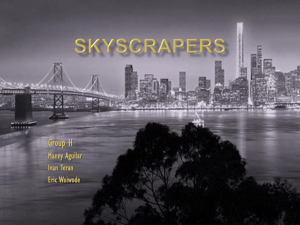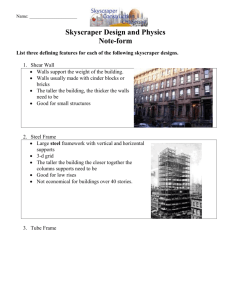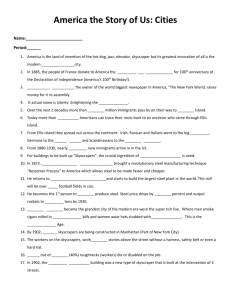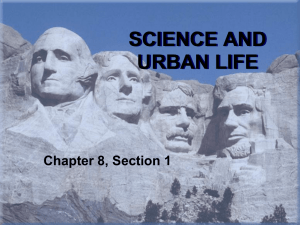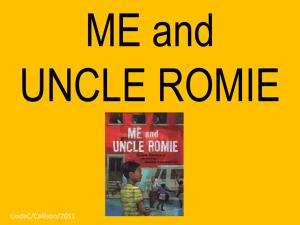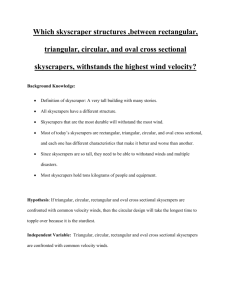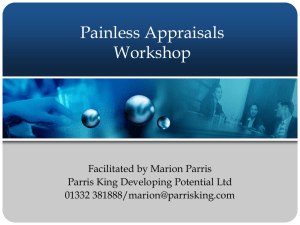Suzanne Thomas January 2014
advertisement
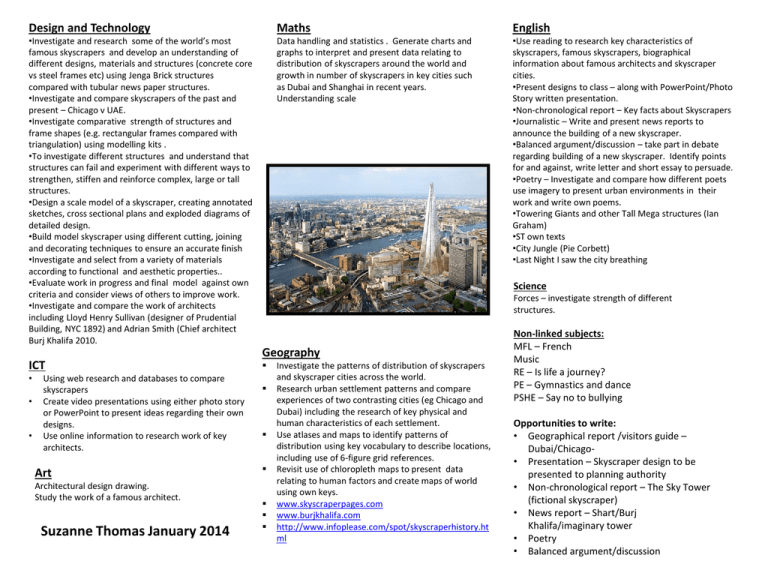
Design and Technology Maths English •Investigate and research some of the world’s most famous skyscrapers and develop an understanding of different designs, materials and structures (concrete core vs steel frames etc) using Jenga Brick structures compared with tubular news paper structures. •Investigate and compare skyscrapers of the past and present – Chicago v UAE. •Investigate comparative strength of structures and frame shapes (e.g. rectangular frames compared with triangulation) using modelling kits . •To investigate different structures and understand that structures can fail and experiment with different ways to strengthen, stiffen and reinforce complex, large or tall structures. •Design a scale model of a skyscraper, creating annotated sketches, cross sectional plans and exploded diagrams of detailed design. •Build model skyscraper using different cutting, joining and decorating techniques to ensure an accurate finish •Investigate and select from a variety of materials according to functional and aesthetic properties.. •Evaluate work in progress and final model against own criteria and consider views of others to improve work. •Investigate and compare the work of architects including Lloyd Henry Sullivan (designer of Prudential Building, NYC 1892) and Adrian Smith (Chief architect Burj Khalifa 2010. Data handling and statistics . Generate charts and graphs to interpret and present data relating to distribution of skyscrapers around the world and growth in number of skyscrapers in key cities such as Dubai and Shanghai in recent years. Understanding scale •Use reading to research key characteristics of skyscrapers, famous skyscrapers, biographical information about famous architects and skyscraper cities. •Present designs to class – along with PowerPoint/Photo Story written presentation. •Non-chronological report – Key facts about Skyscrapers •Journalistic – Write and present news reports to announce the building of a new skyscraper. •Balanced argument/discussion – take part in debate regarding building of a new skyscraper. Identify points for and against, write letter and short essay to persuade. •Poetry – Investigate and compare how different poets use imagery to present urban environments in their work and write own poems. •Towering Giants and other Tall Mega structures (Ian Graham) •ST own texts •City Jungle (Pie Corbett) •Last Night I saw the city breathing ICT • • • Using web research and databases to compare skyscrapers Create video presentations using either photo story or PowerPoint to present ideas regarding their own designs. Use online information to research work of key architects. Art Architectural design drawing. Study the work of a famous architect. Suzanne Thomas January 2014 Science Forces – investigate strength of different structures. Geography Investigate the patterns of distribution of skyscrapers and skyscraper cities across the world. Research urban settlement patterns and compare experiences of two contrasting cities (eg Chicago and Dubai) including the research of key physical and human characteristics of each settlement. Use atlases and maps to identify patterns of distribution using key vocabulary to describe locations, including use of 6-figure grid references. Revisit use of chloropleth maps to present data relating to human factors and create maps of world using own keys. www.skyscraperpages.com www.burjkhalifa.com http://www.infoplease.com/spot/skyscraperhistory.ht ml Non-linked subjects: MFL – French Music RE – Is life a journey? PE – Gymnastics and dance PSHE – Say no to bullying Opportunities to write: • Geographical report /visitors guide – Dubai/Chicago• Presentation – Skyscraper design to be presented to planning authority • Non-chronological report – The Sky Tower (fictional skyscraper) • News report – Shart/Burj Khalifa/imaginary tower • Poetry • Balanced argument/discussion


